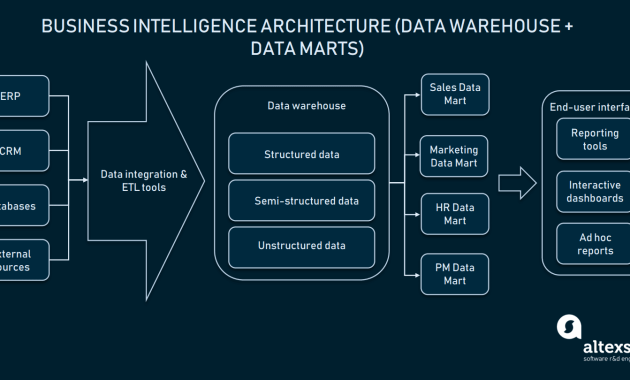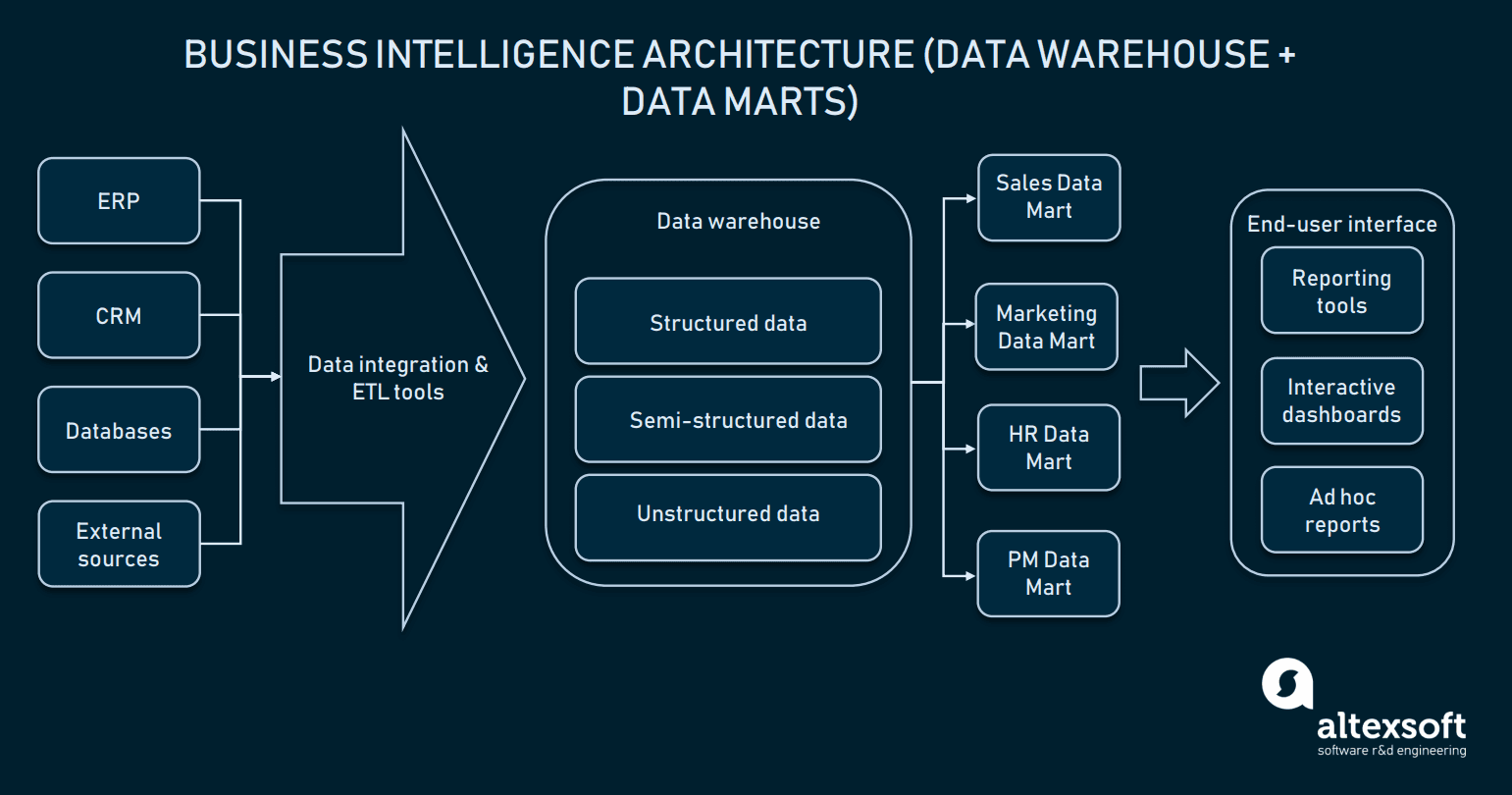
Building a Winning Strategy: Leveraging Business Intelligence Software for Data-Driven Success
In today’s fast-paced business environment, data is the new currency. Companies that effectively harness the power of their data are the ones that thrive. This is where business intelligence (BI) software steps in, transforming raw data into actionable insights. This article delves into how to build a strategy with business intelligence software, providing a roadmap for organizations seeking to unlock their data’s full potential. We will explore the key components of a successful BI strategy, best practices, and the tangible benefits of data-driven decision-making.
Understanding the Power of Business Intelligence
Before diving into strategy, it’s crucial to understand what business intelligence software truly offers. At its core, BI software is designed to collect, process, analyze, and visualize data. This process allows businesses to gain a deeper understanding of their operations, customers, and market trends. This understanding empowers better decision-making. BI tools provide dashboards, reports, and interactive visualizations. These tools make complex data accessible and understandable to users across all departments. The goal is to move beyond gut feelings and make informed decisions based on solid evidence.
Defining Your Business Objectives
The first step in building a robust BI strategy is to define your business objectives. What are you hoping to achieve with business intelligence software? Are you looking to increase sales, reduce costs, improve customer satisfaction, or optimize operational efficiency? Clear objectives will shape your entire BI strategy. They guide data collection, analysis, and the selection of appropriate BI tools. Without clear objectives, you risk collecting irrelevant data and wasting resources. Consider using the SMART framework (Specific, Measurable, Achievable, Relevant, Time-bound) to define your objectives. For example, a specific goal could be to increase sales by 15% within the next year. This is measurable and achievable.
Identifying Key Performance Indicators (KPIs)
Once you have defined your business objectives, the next step is to identify your Key Performance Indicators (KPIs). KPIs are measurable values that demonstrate how effectively a company is achieving its business objectives. They act as the yardstick for measuring progress. For example, if your objective is to increase sales, your KPIs might include sales revenue, customer acquisition cost, and conversion rates. KPIs should be specific, measurable, and aligned with your overall business strategy. Regularly monitor and analyze KPIs to track progress and identify areas for improvement. This will help you adjust your strategy. The proper selection and tracking of KPIs are critical for a successful business intelligence software implementation.
Data Collection and Preparation
Data is the lifeblood of any BI initiative. The quality of your data directly impacts the accuracy and reliability of your insights. Data collection involves gathering data from various sources, such as databases, spreadsheets, CRM systems, and marketing platforms. Data preparation is a crucial step that involves cleaning, transforming, and integrating data. This ensures data consistency and accuracy. This process often involves removing duplicates, correcting errors, and standardizing data formats. Data quality is paramount. Invest in data validation and cleansing processes to ensure the integrity of your analysis. A well-prepared dataset is the foundation of effective business intelligence software use.
Selecting the Right Business Intelligence Software
The market offers a wide array of business intelligence software solutions. Choosing the right one for your needs is critical. Consider factors such as your business size, budget, technical expertise, and specific requirements. Some popular BI tools include Tableau, Power BI, Qlik Sense, and Domo. Evaluate each tool based on its features, ease of use, scalability, and integration capabilities. Consider the user interface and the types of visualizations it offers. Does the software support the data sources you need to connect to? Does it offer robust reporting and dashboarding capabilities? Before making a final decision, it’s wise to conduct a trial period. This will help you see how the software fits your workflow.
Developing Dashboards and Reports
Dashboards and reports are the primary vehicles for delivering insights to stakeholders. Design dashboards that are visually appealing, easy to understand, and relevant to the target audience. Use clear charts, graphs, and tables to present data effectively. Focus on key KPIs and trends. Reports should provide a deeper dive into the data. They should offer more detailed analysis. Customize dashboards and reports to meet the specific needs of different departments. For example, a sales team might need a dashboard that tracks sales performance. A marketing team might need a dashboard that tracks campaign performance. Regularly review and update dashboards and reports to ensure they remain relevant and accurate. This is a core function of business intelligence software.
Data Analysis and Interpretation
Once you have your data prepared and visualized, the next step is to analyze it. This involves identifying patterns, trends, and anomalies. Look for correlations and insights that can inform your business decisions. Use statistical analysis, data mining, and predictive modeling techniques to uncover hidden opportunities. Don’t just rely on the numbers. Interpret the data within the context of your business objectives and market conditions. This is where your business acumen comes into play. Translate data into actionable insights. This means understanding why something is happening and what you can do about it. Continuous learning and improvement are key to mastering data analysis. The goal is to use business intelligence software to make informed decisions.
Data-Driven Decision-Making and Actionable Insights
The ultimate goal of a BI strategy is to drive data-driven decision-making. Use the insights gained from your data analysis to make informed decisions. These decisions should be aligned with your business objectives. This means making choices based on evidence, not just intuition. Use data to identify opportunities, mitigate risks, and optimize your operations. For example, data might reveal that a particular marketing campaign is underperforming. You can then adjust the campaign strategy to improve its results. Data should inform every aspect of your business. From product development to customer service. Act on the insights you gain. Data analysis is only valuable if it leads to action. This is the core value of business intelligence software.
Training and User Adoption
Even the best business intelligence software is useless without proper user training and adoption. Provide comprehensive training to your employees on how to use the BI tools. This should include how to access data, create reports, and interpret insights. Foster a data-driven culture. Encourage employees to use data to support their decision-making. Promote the benefits of BI throughout the organization. Make data accessible and easy to understand. Provide ongoing support and training. This will ensure that users are comfortable and confident in using the software. User adoption is crucial for realizing the full potential of your BI investment.
Measuring the ROI of Your BI Strategy
It’s essential to measure the Return on Investment (ROI) of your BI strategy. This helps you justify the investment and identify areas for improvement. Track key metrics, such as increased sales, reduced costs, improved customer satisfaction, and enhanced operational efficiency. Compare the results before and after implementing the BI software. This will help you determine the impact of your BI initiative. Use these metrics to refine your strategy and optimize your BI investments. Regular ROI assessments ensure that your BI strategy remains aligned with your business goals. This is a key performance indicator of your business intelligence software effectiveness.
Best Practices for Success
Here are some best practices to ensure the success of your BI strategy:
- Start Small and Scale: Begin with a pilot project to test your BI strategy. Then, expand gradually as you gain experience.
- Involve Stakeholders: Engage stakeholders from all departments in the BI process. This will ensure buy-in and alignment.
- Focus on Data Quality: Invest in data validation and cleansing processes to ensure data accuracy.
- Prioritize User Experience: Design dashboards and reports that are easy to understand and use.
- Foster a Data-Driven Culture: Encourage employees to use data to support their decision-making.
- Continuously Improve: Regularly review and update your BI strategy. Adapt to changing business needs.
The Future of Business Intelligence
The future of business intelligence is bright. Emerging technologies, such as artificial intelligence (AI) and machine learning (ML), are poised to revolutionize BI. AI and ML can automate data analysis, provide predictive insights, and personalize dashboards. These technologies will further empower businesses to make data-driven decisions. The evolution of business intelligence software is constant. As technology advances, so too will the capabilities of BI tools. Businesses that embrace these advancements will gain a competitive advantage.
Conclusion
Building a successful strategy with business intelligence software is a journey. It requires careful planning, execution, and ongoing evaluation. By following the steps outlined in this article, you can unlock the power of your data and drive data-driven decision-making. Define your objectives, choose the right tools, and foster a data-driven culture. This will lead to improved business performance. Embrace the future of BI. It will empower your organization to thrive in the modern business landscape. The effective use of business intelligence software is no longer optional. It’s a necessity for staying competitive.
[See also: Related Article Titles]

